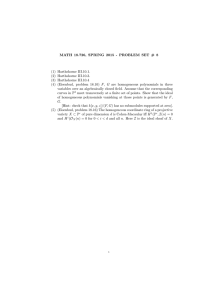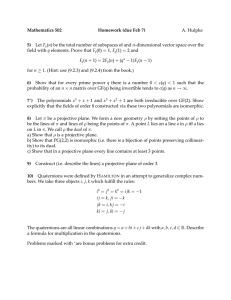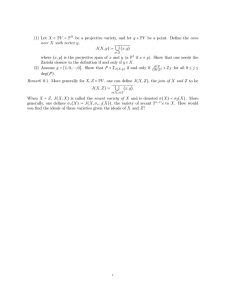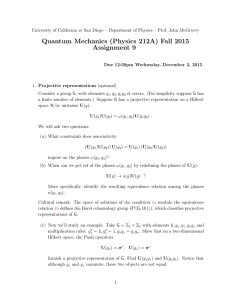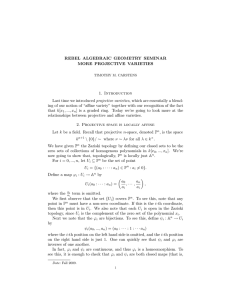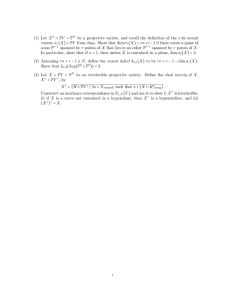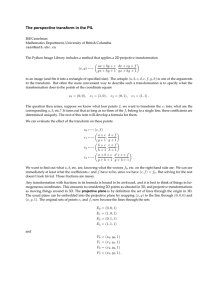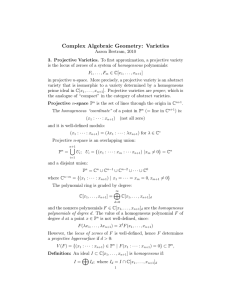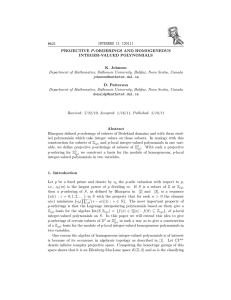MATH-GA 2150.001: Homework 2
advertisement
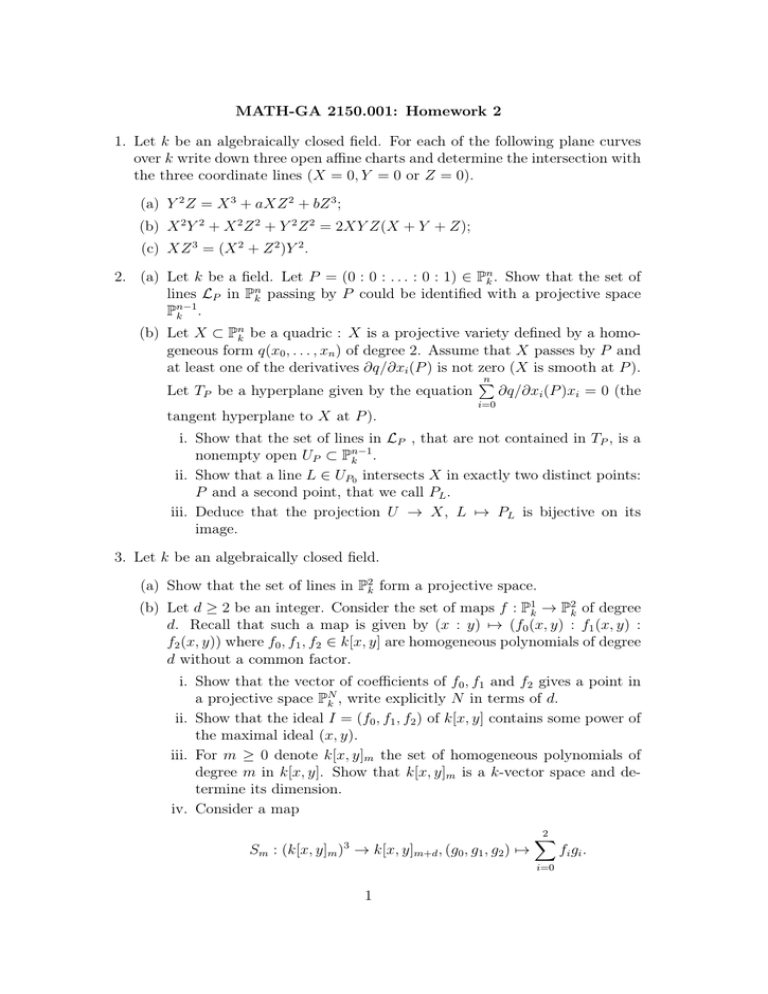
MATH-GA 2150.001: Homework 2 1. Let k be an algebraically closed field. For each of the following plane curves over k write down three open affine charts and determine the intersection with the three coordinate lines (X = 0, Y = 0 or Z = 0). (a) Y 2 Z = X 3 + aXZ 2 + bZ 3 ; (b) X 2 Y 2 + X 2 Z 2 + Y 2 Z 2 = 2XY Z(X + Y + Z); (c) XZ 3 = (X 2 + Z 2 )Y 2 . 2. (a) Let k be a field. Let P = (0 : 0 : . . . : 0 : 1) ∈ Pnk . Show that the set of lines LP in Pnk passing by P could be identified with a projective space Pn−1 . k (b) Let X ⊂ Pnk be a quadric : X is a projective variety defined by a homogeneous form q(x0 , . . . , xn ) of degree 2. Assume that X passes by P and at least one of the derivatives ∂q/∂xi (P ) is not zero (X is smooth at P ). n P ∂q/∂xi (P )xi = 0 (the Let TP be a hyperplane given by the equation i=0 tangent hyperplane to X at P ). i. Show that the set of lines in LP , that are not contained in TP , is a nonempty open UP ⊂ Pkn−1 . ii. Show that a line L ∈ UP0 intersects X in exactly two distinct points: P and a second point, that we call PL . iii. Deduce that the projection U → X, L 7→ PL is bijective on its image. 3. Let k be an algebraically closed field. (a) Show that the set of lines in P2k form a projective space. (b) Let d ≥ 2 be an integer. Consider the set of maps f : P1k → P2k of degree d. Recall that such a map is given by (x : y) 7→ (f0 (x, y) : f1 (x, y) : f2 (x, y)) where f0 , f1 , f2 ∈ k[x, y] are homogeneous polynomials of degree d without a common factor. i. Show that the vector of coefficients of f0 , f1 and f2 gives a point in a projective space PN k , write explicitly N in terms of d. ii. Show that the ideal I = (f0 , f1 , f2 ) of k[x, y] contains some power of the maximal ideal (x, y). iii. For m ≥ 0 denote k[x, y]m the set of homogeneous polynomials of degree m in k[x, y]. Show that k[x, y]m is a k-vector space and determine its dimension. iv. Consider a map Sm : (k[x, y]m )3 → k[x, y]m+d , (g0 , g1 , g2 ) 7→ 2 X i=0 1 f i gi . Show that Sm is a linear map and that if Sm is not surjective then all (m + d + 1)-minors of some matrix, whose entries are linear combinations of the coefficients of f0 , f1 and f2 , vanish. v. Show that for some m the map Sm is surjective. vi. Deduce that the set maps f : P1k → P2k of degree d corresponds to a Zariski open in the projective space PN k corresponding to the coefficients of f . 2
